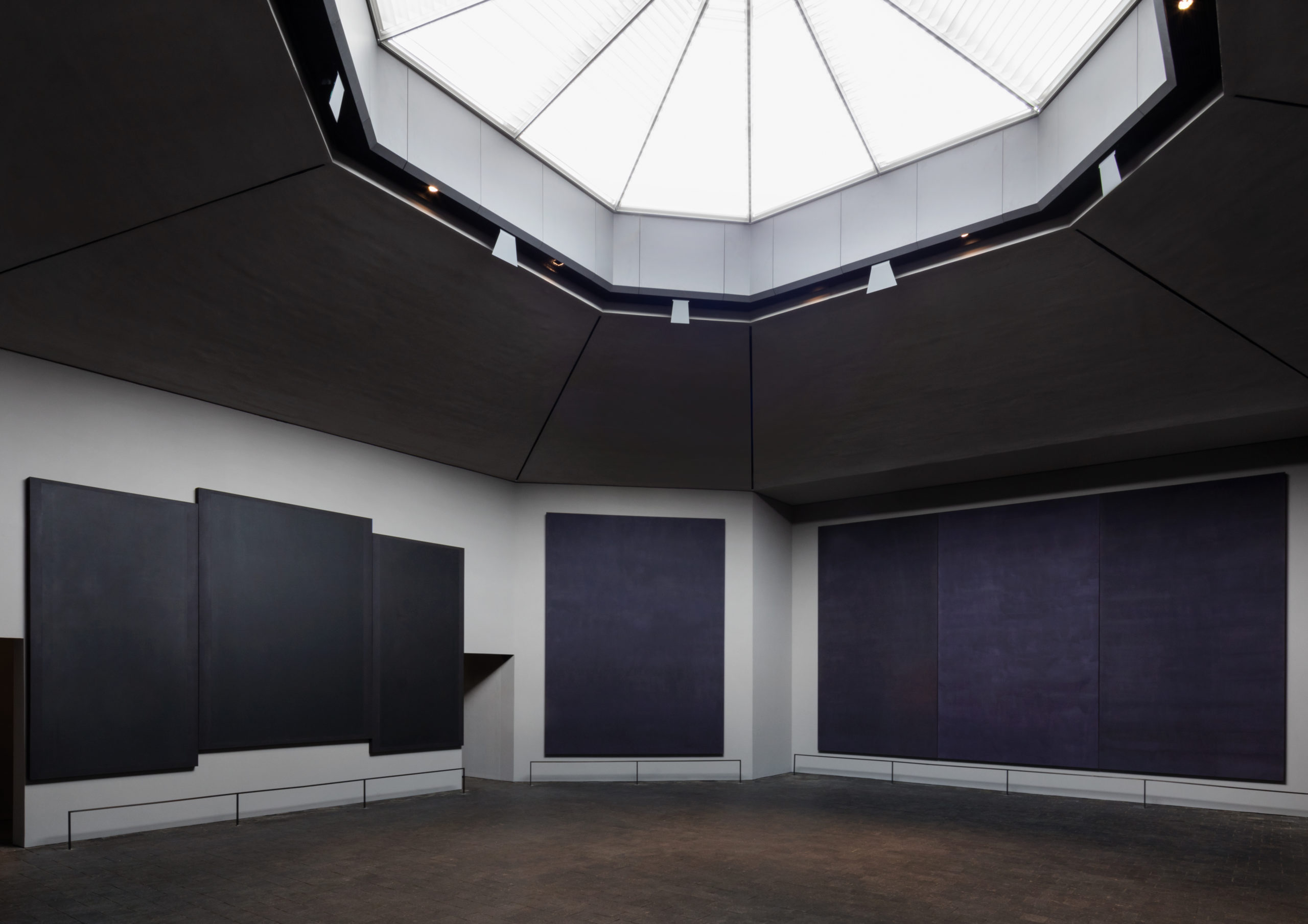Houston’s Rothko Chapel is open again following an update by Architecture Research Office (ARO). The chapel originally opened in 1971 and is part of local philanthropists John and Dominique de Menil’s cultural legacy, which includes the neighboring art museum The Menil Collection. Designed collaboratively by patrons, painter Mark Rothko, and architects Howard Barnstone and Eugene Aubry, the chapel is an unassuming octagonal structure with beige brick walls. It is both a site-specific art installation housing 14 enormous bespoke paintings from Rothko’s dark period and an interfaith chapel with a mission of promoting civil rights.

The most recent work by ARO follows a 1999 refresh that addressed some of the building’s shortcomings, including acoustical problems and glare from the skylight. Neither the first iteration nor the previous renovation, however, lived up to the original designers’ aspirations, which were to create an environment for spiritual enrichment and self-discovery. Whether it was the bad lighting or the popcorn ceiling, something broke the spell Rothko’s paintings were meant to cast.
“[This renovation] wasn’t a restoration,” said ARO partner Stephen Cassell. “It was about strengthening the original intent of the experience.”
Improving this experience began on the exterior, where the architects darkened the paving of the entrance plaza to reduce glare and prepare the eye for the inner sanctum. The existing doorways shifted outward and a replica of the door was added within the vestibule, forming an insulating air lock. A bookstore was moved out of the antechamber, which was resurfaced with acoustic plaster and painted a slightly darker color. Acoustic plaster was also used on much of the main gallery, where the roof was replaced and a louvered skylight added. ARO worked with George Sexton Associates to tune the daylighting, which responds to exterior environmental changes, and refine the electric lighting scheme, which is executed by digital projectors embedded within a recess around the skylight and mirrors. The latter bounce the projectors’ light toward the paintings. The rear wall, which holds the main triptych, was moved six inches inward so that a shadow cast by the soffit no longer cuts off the top of the artwork.
The team also edited out extraneous elements.

“We’ve renovated probably half a dozen midcentury modern buildings,” said ARO partner Adam Yarinsky. “They get diminished over time by incremental things: surface conduit, the stray light switch, the thermostat. The opportunity to cleanse that was important.”
ARO also discreetly integrated code-necessitated features like a fire suppression system and exit signs, none of which are visible from the inner sanctum. This attention to detail has brought the Rothko Chapel as close as it’s ever been to an ideal place for spiritual communion with art.
Header image: A new louvered skylight improves the lighting conditions inside the chapel. (Elizabeth Felicella)
